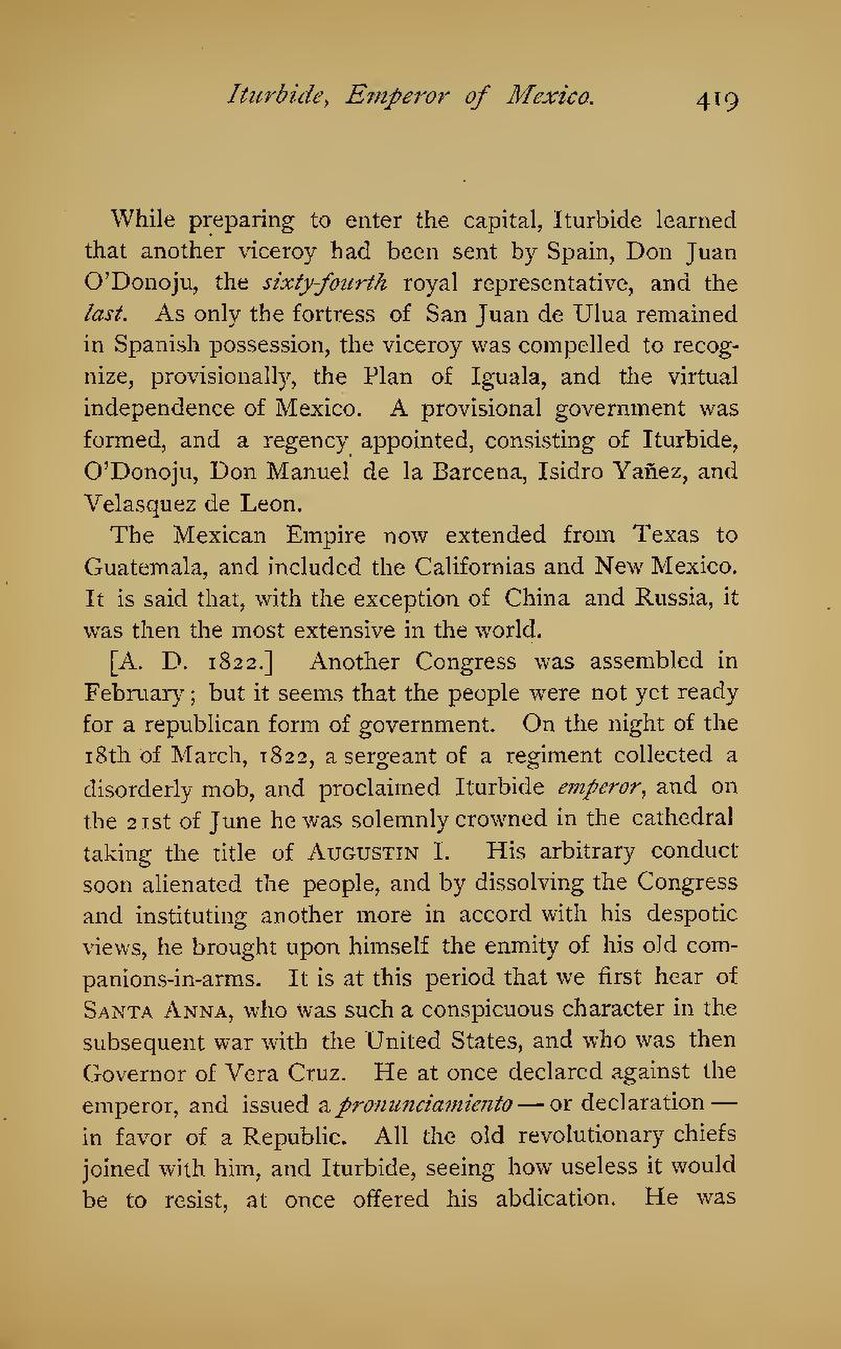While preparing to enter the capital, Iturbide learned that another viceroy had been sent by Spain, Don Juan O'Donoju, the sixty-fourth royal representative, and the last. As only the fortress of San Juan de Ulua remained in Spanish possession, the viceroy was compelled to recognize, provisionally, the Plan of Iguala, and the virtual independence of Mexico. A provisional government was formed, and a regency appointed, consisting of Iturbide, O'Donoju, Don Manuel de la Barcena, Isidro Yañez, and Velasquez de Leon.
The Mexican Empire now extended from Texas to Guatemala, and included the Californias and New Mexico. It is said that, with the exception of China and Russia, it was then the most extensive in the world.
[A. D. 1822.] Another Congress was assembled in February; but it seems that the people were not yet ready for a republican form of government. On the night of the 18th of March, 1822, a sergeant of a regiment collected a disorderly mob, and proclaimed Iturbide emperor, and on the 21st of June he was solemnly crowned in the cathedral taking the title of Augustin I. His arbitrary conduct soon alienated the people, and by dissolving the Congress and instituting another more in accord with his despotic views, he brought upon himself the enmity of his old companions-in-arms. It is at this period that we first hear of Santa Anna, who was such a conspicuous character in the subsequent war with the United States, and who was then Governor of Vera Cruz. He at once declared against the emperor, and issued a pronunciamiento—or declaration—in favor of a Republic. All the old revolutionary chiefs joined with him, and Iturbide, seeing how useless it would be to resist, at once offered his abdication. He was
